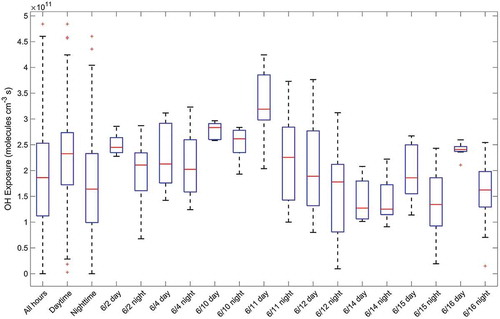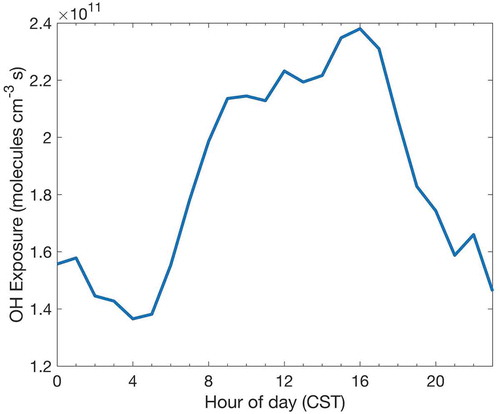Figures & data
Figure 1. Overview map showing spatial coverage of LMOS 2017. Green and dark blue polygons indicate ship and aircraft operations areas, respectively. Enhanced monitoring sites at Sheboygan, WI (north) and Zion, IL (south) are mapped in more detail with insets. KUGN station is Waukegan Airport. Source: Wisconsin Department of Natural Resources (WDNR)
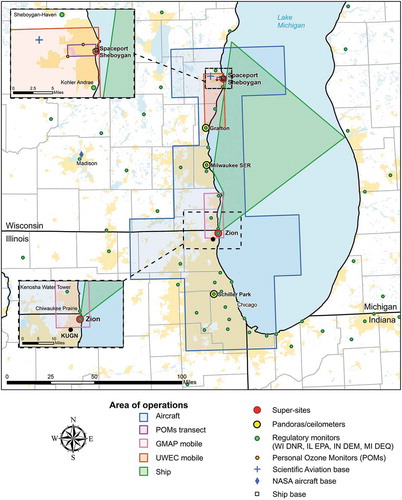
Figure 2. Maps of the EM sites for LMOS 2017 at (a) Zion IL and (b) Sheboygan WI. Also shown is Sheboygan lighthouse, used for supplemental meteorological measurements
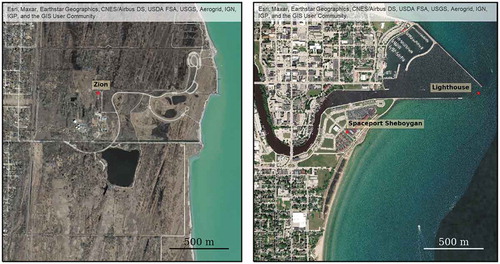
Table 1. Statistics for select measurements from Zion ground site
Table 2. Statistics for select measurements from Sheboygan ground site
Figure 3. Wind roses of Zion (left), Waukegan (center), and Sheboygan (right) for the three cases: all hours (a, d, g), daytime hours (b, e, h) and daytime hours during ozone episodes (c, f, i). Wind speed in m/s. Zion: 1-min resolution data from May 31 to June 21. Waukegan: 1 hr resolution data from May 31 to June 21. Sheboygan: 1 min resolution data from May 21 to June 21
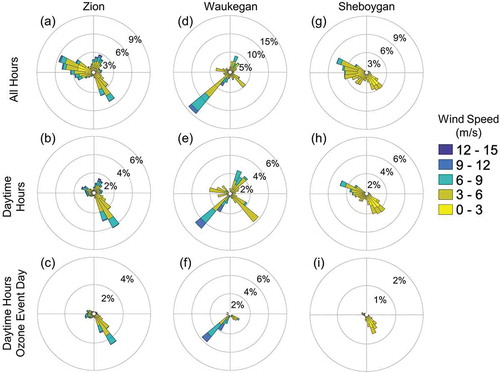
Figure 4. Spatial density plot of 48 hr back trajectory frequency for trajectories terminating at Zion, grouped by (a) daytime, (b) ozone episode daytime, (c) nighttime, and (d) all hours
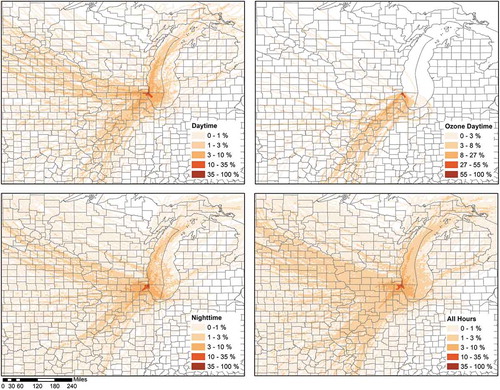
Figure 5. Spatial density plot of 48 hr back trajectories for trajectories terminating at Spaceport Sheboygan for (a) daytime, (b) ozone daytime, (c) nighttime, and (d) all hours

Figure 6. Pollution roses for O3 (left) and NOx (right) at Zion site grouped by (a, d) all hours, (b, e) daytime hours and (c, f) ozone episode daytime. Concentrations in ppb. Created using 1 min resolution data from May 31 to June 21
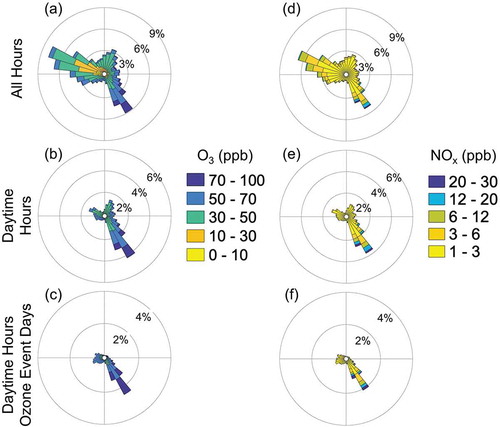
Figure 7. Pollution roses for O3 (left) and NOx (right) at Sheboygan site grouped by (a, d) all hours, (b, e) daytime hours and (c, f) ozone episode daytime. Concentrations in ppb. Created using 1 min resolution data from May 21 to June 21
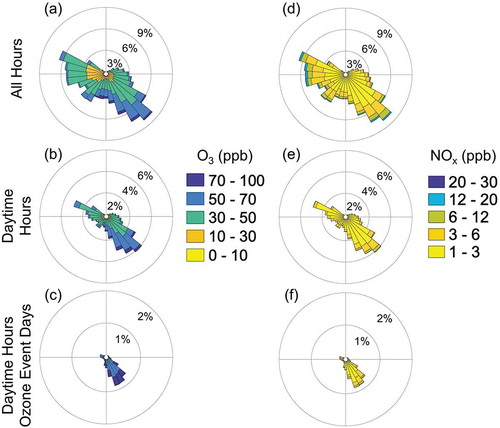
Figure 8. Cartograms centered on (a) Zion and (b) Sheboygan showing location and cumulative emissions (CO2) of major stationary sources relative to the EM sites. Cartograms are scaled according to logarithm of distance away from the EM site
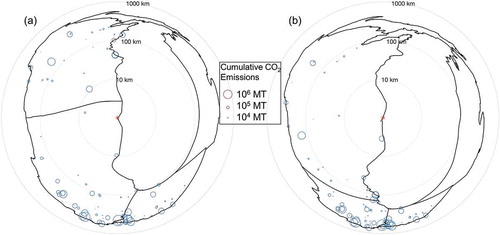
Figure 9. (a) Pleasant Prairie, (b) Zion Energy Center, (c) Waukegan Generating Station and (d) Edgewater Generating Station. Areas of circles are proportional to facility CEM cumulative CO2 emissions and bar charts of cumulative NOx and SO2 emissions (MT) during LMOS 2017 from May 21 to June 21

Figure 10. Results from 94 train detections over a 10 day period meeting all required criteria (meteorology and available particle size distribution measurements). The average time series is shown in panel (a) with a short pulse of audio volume indicating passage of train; particle number increases, rising from a minimum of 1930 cm-3 to a peak of 2749 cm-3 5.5 minutes after the train detection. Histograms of (b) particle number and (c) audio volume before and after show modest increase, and no change, respectively
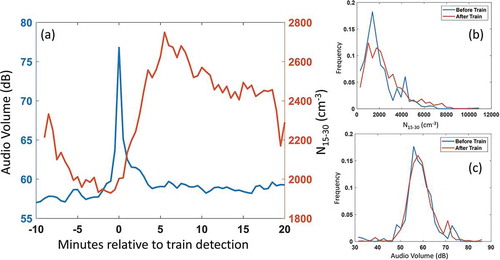
Figure 11. PMF factor time series and conditional probability functions. Abscissa units are in CST and tick marks are at midnight CST. The shading represents ozone event days


